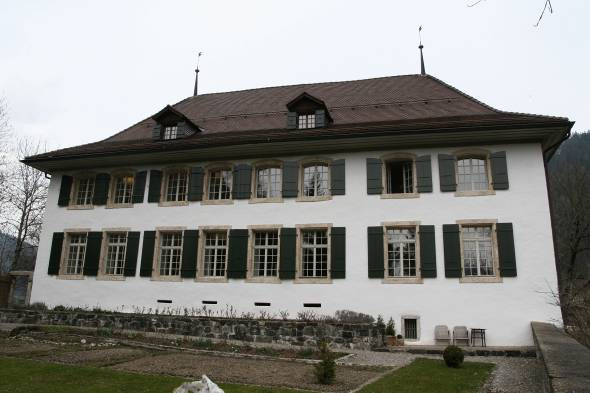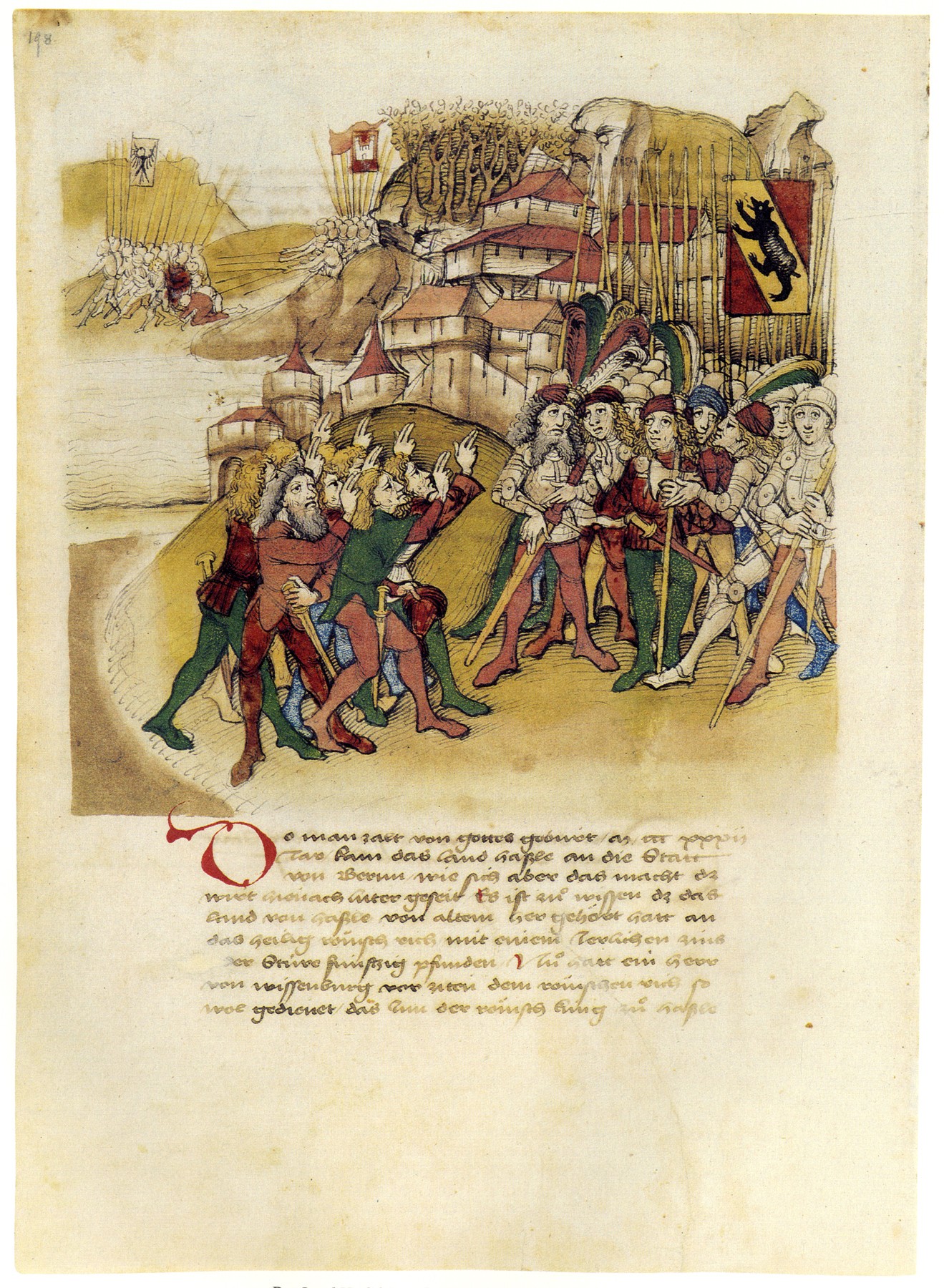|
Canton Of Oberland
Oberland (German for ''Highlands'') was the name of a canton of the Helvetic Republic (1798–1803), corresponding to the area of the Bernese Oberland, with its capital at Thun. History After the Napoleonic invasion of Switzerland in 1798, the old Bernese order was broken up and the Oberland separated from the rest of the canton. Within the new canton, historic borders and traditional rights were not considered. As there had been no previous separatist feeling amongst the conservative population, there was little enthusiasm for the new order. The 1801 Malmaison Constitution proposed reuniting the Oberland with Bern, but it was not until the Act of Mediation, two years later, with the abolition of the Helvetic Republic and the partial restoration of the ''ancien régime'', that the two cantons were reunited. Districts During its short-lived existence, the canton was administered in ten districts, each named for the district seat, except where shown: * Aeschi * Brienz * Fru ... [...More Info...] [...Related Items...] OR: [Wikipedia] [Google] [Baidu] |
Canton (subnational Entity)
A canton is a type of administrative division of a country. In general, cantons are relatively small in terms of area and population when compared with other administrative divisions such as counties, departments, or provinces. Internationally, the most politically important cantons are the Swiss cantons. As the constituents of the Swiss Confederation, theoretically and historically, they are semi-sovereign states. The term is derived from the French word '' canton'', meaning "corner" or "district" (from which "cantonment" is also derived). In specific countries Cantons exist or previously existed in the following countries: *Cantons of Belgium * Cantonal Government of Bohol *Cantons of Bolivia *Cantons of Bosnia and Herzegovina: federal units of the Federation of Bosnia and Herzegovina *Canada: Canadian French equivalent for the English word "township", since the translation ''municipalité'' is already used for a different level of government (see township). ** Cantons of Qu ... [...More Info...] [...Related Items...] OR: [Wikipedia] [Google] [Baidu] |
Frutigen
Frutigen is a municipality in the Bernese Oberland in the canton of Bern in Switzerland. It is the capital of the Frutigen-Niedersimmental administrative district. History The area around Frutigen may have been settled since possibly the Bronze Age or Roman times. It is first mentioned in 1234 as ''Frutingen''. During the Middle Ages there were three castles in the modern municipal border; Halten, Tellenburg and Bürg. By 1260 the scattered farmers of the valley floor had formed a political and business association. The association had its own seal in 1263 and in 1340 it negotiated a peace with an association in the Obersimmental. In 1391, the village of Frutigen gained the right to hold the low court in the village. In 1400, the expanding city-state of Bern annexed the entire valley. However, the association was powerful enough to force Bern to make concessions. The residents of the valley were freed from the obligation to pay taxes or provide labor for local lord ... [...More Info...] [...Related Items...] OR: [Wikipedia] [Google] [Baidu] |
Niedersimmental
Niedersimmental District was one of the 26 administrative districts in the canton of Bern, Switzerland. Its capital was the municipality of Wimmis. The district had an area of 319 km² and consisted of 9 municipalities A municipality is usually a single administrative division having corporate status and powers of self-government or jurisdiction as granted by national and regional laws to which it is subordinate. The term ''municipality'' may also mean the go ...: References Former districts of the canton of Bern {{Berne-geo-stub ... [...More Info...] [...Related Items...] OR: [Wikipedia] [Google] [Baidu] |
Zweisimmen
Zweisimmen is a municipality in the Obersimmental-Saanen administrative district in the canton of Bern in Switzerland. History Zweisimmen is first mentioned in 1228 as ''Duessimenes''. In 1257 it was mentioned as ''Zweinlixhenun''. The oldest trace of a settlement in the area are some scattered mesolithic artifacts from Mannenberg-Riedli. The remains of a Roman era settlement were found at Mannried. During the Middle Ages a significant trade route over the Alps to Valais and Lake Geneva passed through the Zweisimmen region. A number of farming villages probably existed in the area during the Middle Ages. In the 13th and 14th centuries, local nobles built several castles, Upper Mannenberg and Lower Mannenberg, Reichenstein-Terenstein, Blankenburg and Steinegg Castles, to protect and collect taxes from the roads. The villages and castles passed through several noble families until 1378 when the Lord of Düdingen sold the lands to Fribourg following an uprising. After the ... [...More Info...] [...Related Items...] OR: [Wikipedia] [Google] [Baidu] |
Obersimmental
Obersimmental District was one of the 26 administrative districts in the Canton of Bern, Switzerland. Its capital was Blankenburg in the municipality of Zweisimmen. The district had an area of 334 km² and consisted of 4 municipalities A municipality is usually a single administrative division having corporate status and powers of self-government or jurisdiction as granted by national and regional laws to which it is subordinate. The term ''municipality'' may also mean the go ...: External links Official website of Zweisimmen References Former districts of the canton of Bern {{Berne-geo-stub ... [...More Info...] [...Related Items...] OR: [Wikipedia] [Google] [Baidu] |
Saanen
Saanen (french: Gessenay; Highest Alemannic German, Highest Alemannic: ''Saanä'') is a municipalities of Switzerland, municipality in the Cantons of Switzerland, canton of Bern (canton), Bern in Switzerland. It is the capital of the Obersimmental-Saanen (administrative district), Obersimmental-Saanen administrative district. History The village was first mentioned in 1228 as ''Gissinay''. In 1340 it was mentioned as ''Sanon''. During the Bronze Age there was a hill fort on the Cholis Grind near the modern village of Saanen. The region was occupied by the Gallo-Roman culture, Gallo-Romans until the 10th or 11th century when the Alamanni began to drive them out. This migration created the modern language borders in Switzerland. During the Middle Ages several forts were built to guard the mule trails into the Valais and Vaud. These included the Kramburg (which was first mentioned in 1331 but is now covered by later construction), the Swabia Ried tower (11th-12th century) and the ... [...More Info...] [...Related Items...] OR: [Wikipedia] [Google] [Baidu] |
Meiringen
Meiringen () is a municipality in the Interlaken-Oberhasli administrative district in the canton of Bern in Switzerland. Besides the village of Meiringen, the municipality includes the settlements of Balm, Brünigen, Eisenbolgen, Hausen, Prasti, Sand, Stein, Unterbach, Unterheidon, Wylerli and Zaun. Meiringen is famous for the nearby Reichenbach Falls, a waterfall that was the setting for the final showdown between Sir Arthur Conan Doyle's fictional detective Sherlock Holmes and his nemesis Professor Moriarty. The village is also known for its claim to have been the place where meringue was first created. The municipal coat of arms shows a black eagle in a yellow field. (" Or an Eagle displayed Sable crowned, beaked, langued and membered of the first.") Formerly the coat of arms of the entire Oberhasli ''Talschaft'', this design continues the imperial coat of arms. Geography Meiringen is located in the eastern Bernese Oberland region, in the Haslital on the upper reaches ... [...More Info...] [...Related Items...] OR: [Wikipedia] [Google] [Baidu] |
Oberhasli (district)
The Oberhasli is a historical ''Landvogtei'' or ''Talschaft'' in the Bernese Highlands, Switzerland, bordering on the cantons of Obwalden (OW), Nidwalden (NW), Uri (UR) and Wallis (VS). From 1833 to 2009, Oberhasli was incorporated as the Oberhasli district, the easternmost of the 26 districts of the canton of Bern, bordering the district of Interlaken to the west. Since 2010, Oberhasli and Interlaken have been administratively united as the administrative district Interlaken-Oberhasli. The local dialect is of the Highest Alemannic variety. With its area of 551 km², it is larger than the canton of Basel-Landschaft. It consists of the six municipalities of Gadmen, Guttannen, Hasliberg, Innertkirchen, Meiringen and Schattenhalb, with a total population of just below 8,000, corresponding to a population density of less than 15/km2 (compared to a Swiss average of 181/km2), due to a significant portion of the area of Oberhasli being uninhabitable High Alps. Haslital is us ... [...More Info...] [...Related Items...] OR: [Wikipedia] [Google] [Baidu] |



